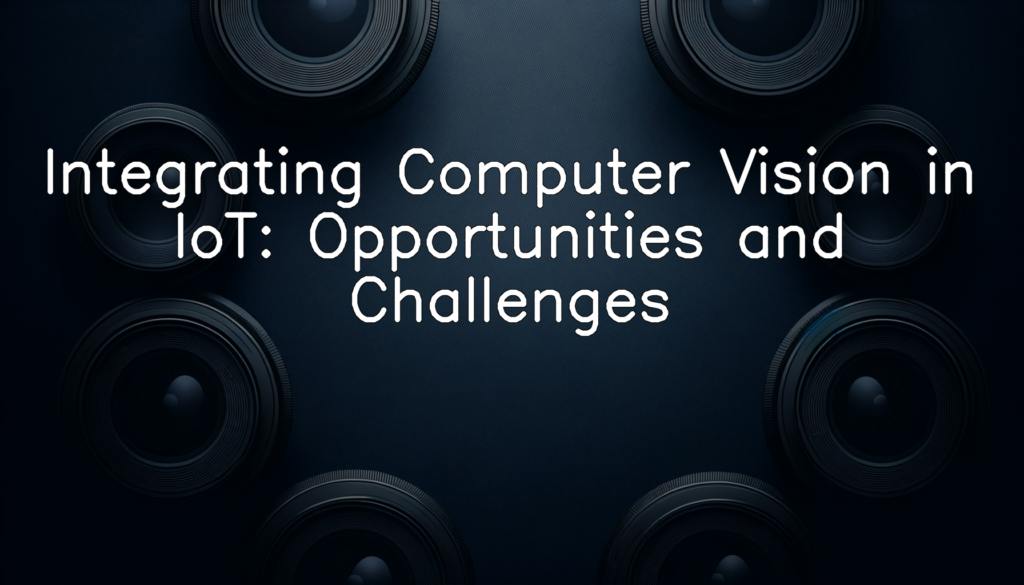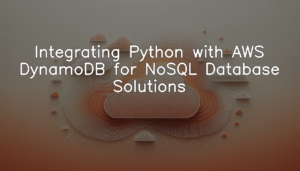Understanding the Basics of Computer Vision
Computer Vision, in simple terms, is a sector of artificial intelligence (AI) that trains computers to interpret and make sense of the visual world. Technically, it empowers computers to ‘see’ and ‘understand’ digital images & videos from the real world, the same way human vision does. This understanding goes beyond processing raw pixel data to extract patterns & features. It involves sophisticated algorithms and learning techniques that allow systems to identify objects, classify them by their type and even recognize scenes & activities. This technology is prevalent in various fields including healthcare, where it is used for medical image analysis, in the automotive industry for self-driving cars, and notably, it also plays a key role in the automation and intelligence of ‘smart’ devices a core aspect of IoT. However, it’s essential to note, while computer vision mimics human capabilities, the processing, and results may differ due to various factors such as lighting, perspective, and quality of the image or video.
Understanding the Basics of Internet of Things (IoT)
The Internet of Things (IoT) represents a network where various physical objects and devices are connected to the internet, and can communicate data without requiring human-to-human or human-to-computer interaction. These devices could be anything from consumer products like refrigerators and watches to industrial tools and sensors. The main aim of IoT is to create smart, efficient systems utilizing the vast amount of data produced by these connected devices. Such systems then leverage data analysis and automation to provide more value, be it in the form of insights, predictive analysis, or automated tasks. This ability of IoT to be incorporated into almost any device and to facilitate significant data communication is what opens up exciting possibilities when integrated with technologies like computer vision.
The Synergy between Computer Vision and IoT
The Science behind Computer Vision in IoT
Before delving into the applications of integrating computer vision and IoT, it’s crucial to understand the science making this symbiosis possible. At its core, computer vision involves imparting machines with the ability to ‘see’ and interpret visual data much like human beings. This is achieved through the use of artificial intelligence and machine learning algorithms that can analyze and process visual data. This visual data can be in the form of videos or images captured by cameras embedded in IoT devices. Once recorded, this data is segmented, analysed and interpreted, post which it is converted into usable information. The IoT component comes into play as it provides the intelligent connectivity of devices that can utilize this processed information for a variety of applications, creating an interplay of technology ideally crafted for the era of smart devices.
Real World Applications of Computer Vision in IoT
The integration of computer vision in IoT has been transformative across a myriad of sectors. In the arena of healthcare, smart wearables equipped with computer vision can monitor patients’ conditions in real-time, aiding in early diagnosis and treatment. In the automotive industry, the technology has been a game-changer, powering the development of autonomous vehicles that rely on IoT sensors and computer vision algorithms for navigation, collision detection and avoidance. The agricultural sector too has embraced the technology, utilizing drone-based computer vision systems that provide vital insights regarding crop health, pest detection, and yield prediction. Moreover, in the retail industry, computer vision facilitates advanced customer analytics, inventory management, and checkout-free shopping experiences. Despite these diverse applications, each use case fundamentally leverages computer vision and IoT to provide real-time, data-driven insights that weren’t quite achievable before.
Opportunities with Integrating Computer Vision in IoT
Advanced Monitoring and Surveillance Opportunities
The integration of Computer Vision with Internet of Things (IoT) has revolutionized the field of surveillance and monitoring. There has been a shift from simple, manually-operated camera systems to advanced, AI-driven surveillance solutions that automatically process and interpret images and videos. By embedding smart cameras enabled with computer vision capabilities into an IoT network, real-time monitoring can be taken to an entirely new level. This amalgamation of technologies can detect anomalies, recognize faces, monitor traffic, and even track wildlife with an efficiency and precision that simply cannot be achieved by human operators. Such capabilities do not only increase the surveillance scope, but also helps in expediting responses to security issues, therefore making our homes, workplaces, and cities safer.
IoT and Computer Vision in Retail and E-Commerce
The integration of computer vision to the Internet of Things (IoT) has revolutionized retail and e-commerce industry in multifarious ways, paving the way for remarkable customer experiences and contributing to streamlined operations. For instance, in brick-and-mortar stores, IoT devices equipped with computer vision algorithms can track customer behaviour and in-store movements, providing crucial insights into preferences and shopping patterns. As a result, retailers can foster personalized marketing, optimize store layouts, manage inventory and enhance theft prevention tactics. When it comes to e-commerce, computer vision integrated devices can assist in virtual try-ons, allowing customers to visualize merchandise with authentic fidelity, thus improving consumer satisfaction and driving sales.
Harnessing Data from Smart Devices
The integration of Computer Vision into IoT especially shines when utilized in data harnessing from smart devices. Data from smart devices like smartphones, fitness trackers, or smart home devices comes in a multitude of formats, and processing it can be a challenge. Here’s where Computer Vision steps in, effectively recognizing and interpreting this data, including images and videos. This capability can translate into a multitude of advantages, such as enhancing the user experience by providing more personalized services based on the processed data, improving the device’s functionality, and even creating opportunities for new features. For example, a security camera can recognize intruder faces, or a smart refrigerator can record and analyze the items stored inside, providing shopping recommendations or even automated shopping.
Challenges in Integrating Computer Vision in IoT
Challenges in Data Privacy and Security
Integrating computer vision into IoT devices has broad prospects, but it also presents a significant challenge in terms of data privacy and security. Since these technologies revolve around acquiring and processing vast volumes of data, it’s undoubtedly going to catch attention regarding how this data is stored, shared, and used. Data breaches and unauthorized access to data raise serious privacy concerns, and this challenge becomes more pronounced with the increasing prevalence of cameras and IoT devices. Additionally, the scope of rules and regulations regarding data privacy varies globally, further complicating the scenario. Adequate encryption techniques, use of edge computing, and development of comprehensive legal frameworks are some elements essential to tackling these data privacy and security challenges.
Computational and Storage Challenges
Integrating computer vision into IoT isn’t a meager task. It demands a substantial computational and storage infrastructure that can process and analyze the bulk data produced by IoT devices. With video streams captured in high resolution for effective computer vision, the data size increases significantly, thus requiring substantial storage space. Moreover, performing real-time analytics needs solid computational power. Due to these requirements, it becomes challenging to accomplish processing at the edge (near the source of data). As a result, developers often need to shift processing to the cloud, and this could introduce latency, impacting real-time decision making. Hence, balancing the computational and storage needs with real-time processing requirements is a key challenge in integrating computer vision in IoT scenarios.
Challenges in Adopting AI-based Learning Tools
The integration of computer vision in IoT does not come without its fair share of challenges, particularly in adopting AI-based learning tools. Artificial Intelligence is a complex field of study and its integration with IoT in the realm of computer vision necessitates advanced knowledge, skill set and resources. For startup companies and those new to the world of IoT and computer vision, the learning curve may be steep. Further, as machine learning models evolve, businesses must adapt and update their systems regularly, which can prove to be a hard task if they lack the expertise or financial backing. The high cost of AI-tools and the talent it takes to use them effectively is often a major deterrent that creates a barrier to entry, which can limit the widespread application of such innovative technology combinations.
Conclusion
The integration of computer vision into IoT presents a host of opportunities, from advanced monitoring capabilities to enhanced data use within retail and eCommerce industry. However, these advancements are not without their challenges. Data privacy and security remain a significant concern, along with computational and storage limitations. Additionally, there is a noticeable skill gap when it comes to using AI-based learning tools, hindering potential progress. As we continue to grapple with these challenges, the potential for this tech duo is immense, and the impact could revolutionize multiple sectors in the years to come.





